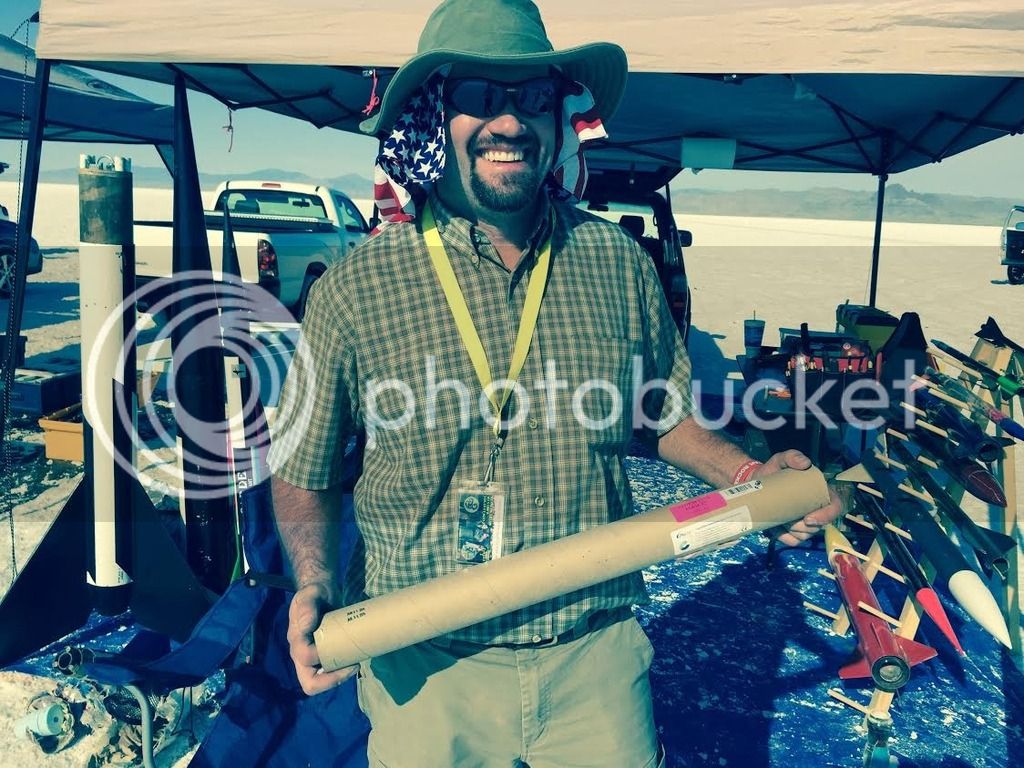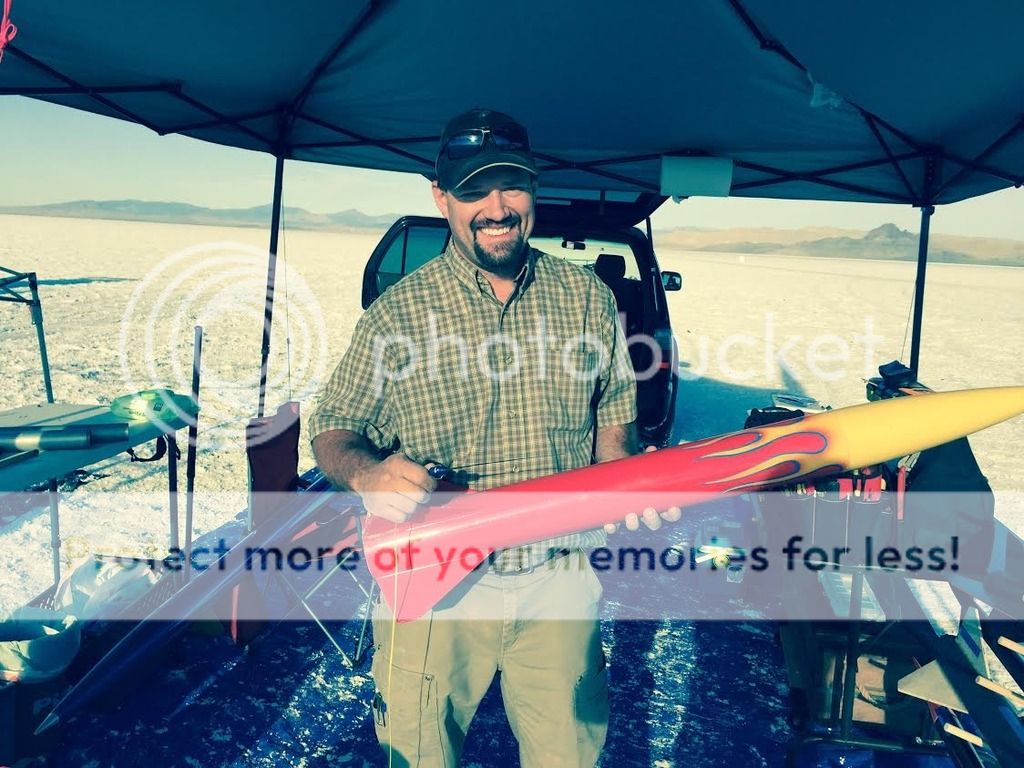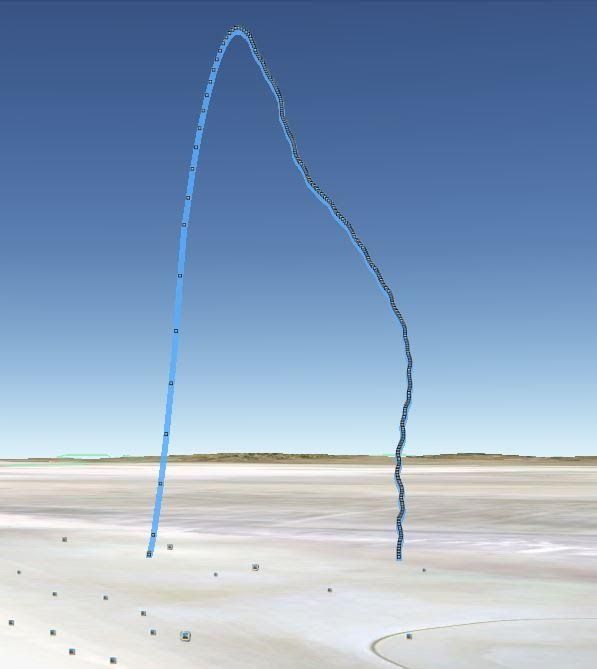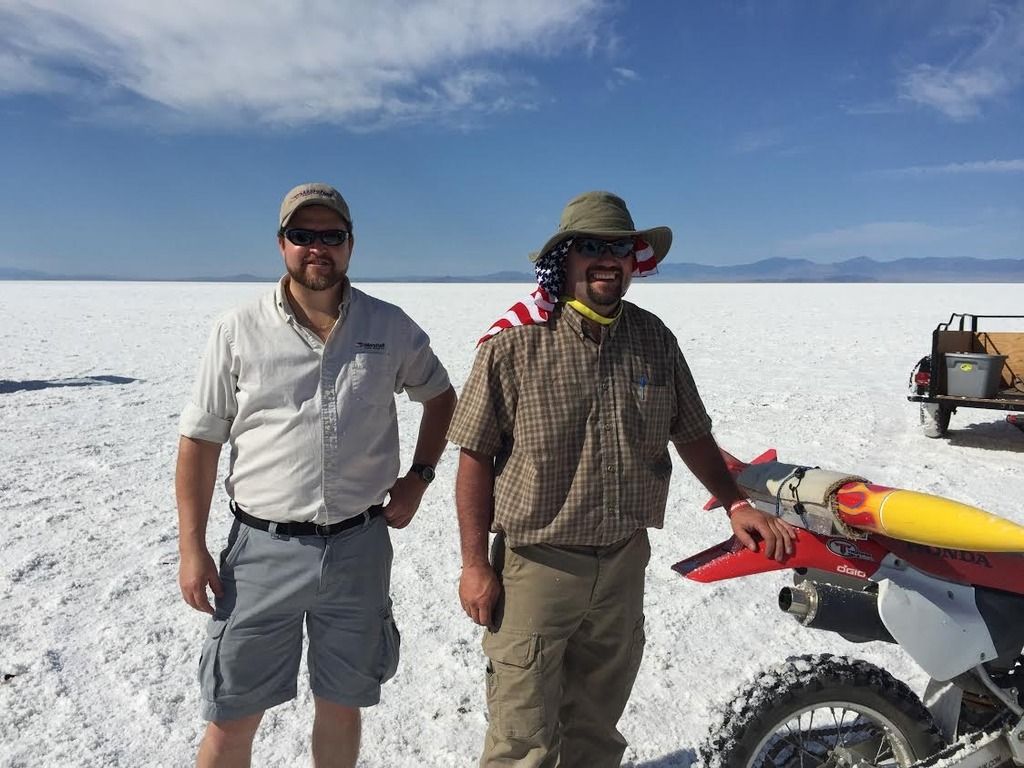During the UROC annual Hellfire event at the Bonneville Salt Flats, I was most privileged to test out the latest Marshall GPS system. I showed up early to the salt and not long after sunrise, Chet Ferry from Marshall Radio Telemetry showed up looking for a willing volunteer to test out the newest offering. It was a hard sell to convince me:lol:. The product is specifically designed for falconry but they had never been able to test the GPS transmitter on anything faster than a diving falcon. I was tickled to be able to have the unit ride along in the rocket. It's super rugged! All I did was enlarge a hole in the nose cone and shove it in. We had a little length of wire on it so we could retrieve it after the flight. I was a little concerned about a rough ride but Chet said it should hold up just fine. I really wanted to give the unit the ride of its life so I settled on a CTI K600 Classic. That got the rocket moving in short order! If I can figure out how to upload the .gpx file, I will do that and you can look at it in Google Earth. Chet was concerned we would lose lock upon liftoff but it stayed locked on perfectly! I wish we had the return trip with the launch and recovery... Nose cone fell off the rocket and got thrashed around and bounced all over when I was riding the bike back to the tent. Check out the Marshall Radio website here: https://www.marshallradio.com/north-american-falconry-products/gps-systems If you don't look at the price, this transmitter is the cat's meow! Even though I will never afford it, it's still absolutely awesome!
Max altitude was 12675 feet,
Max speed was 894 mph
Total distance traveled was 5.3 miles from start to finish.
Big thanks to Chet and Marshall Radio for letting me test their product and thanks to Chet for the pictures!

It's really small. I'm holding it in my right hand

Pretty sweet flight profile!

Can't remember this guys name. It's not Chet though!

-Ken
Max altitude was 12675 feet,
Max speed was 894 mph
Total distance traveled was 5.3 miles from start to finish.
Big thanks to Chet and Marshall Radio for letting me test their product and thanks to Chet for the pictures!

It's really small. I'm holding it in my right hand

Pretty sweet flight profile!

Can't remember this guys name. It's not Chet though!

-Ken




